5: Impact of the Environment, Education, Economy, and Political Conditions on Childhood
- Last updated
- Save as PDF
- Page ID
- 64520
Learning Objectives
During this chapter we will:
- Describe how childhood interactions and experiences are shaped, modified, and defined by institutional and organizational forces such as the economy, education, politics, and religion.
- Identify three to five major challenges facing children today.
- Explain strategies to determine, prioritize, and research issues of concern regarding children that reflect and amplify their voices.
Introduction
Last week we explored Bronfenbrenner’s Ecological Theory and explored some of the influences closest to the child. This week we will explore societal and institutional influences on children. These are the influences from the Exosystem and Macrosystems. The disciplines of economics, education, political science, religion, social work, communications, and law offer insights on how these systems impact childhood.
Terms and Definitions
Important concepts to look for in this chapter:
- Citizenship is gained by meeting the legal requirements of a national, state, or local government. A nation grants certain rights and privileges to its citizens. In return, citizens are expected to obey their country’s laws and defend it against its enemies. In some countries, citizenship can the right to vote, the right to hold government offices, and/or the right to collect unemployment. Living in a country does not mean that a person is necessarily a citizen of that country.
- Cultural politics of Childhood: The combination of the cultural context, social practices, and political processes through which childhood is constructed in different societies at different times.
- Health: A state of complete physical, mental, and social well-being and not merely the absence of disease or infirmity (World Health Organization)
- Innocence: Being naïve or unexperienced and free from guilt.
- Minority Group Status: A subordinate group whose members have significantly less control or power over their lives than members of a dominant or majority group. Children are considered a minority group.
- Poverty: Poverty is often defined in absolute terms of income poverty when a family’s income fails to meet a federally established threshold that differs across countries. Typically it is measured with respect to families and not the individual, and is adjusted for the number of persons in a family. Absolute poverty measures poverty in relation to the amount of money necessary to meet basic needs such as food, clothing, and shelter. Relative poverty defines poverty in relation to the economic status of other members of the society: people are poor if they fall below prevailing standards of living in a given societal context.
- Schools and Schooling: The process of educating children through a social institution of schools and the child’s experience in that process.
- Representation: The linguistic or figurative process by which ideas are given significance and meaning in society. The topic of visual representations of childhood is approached from a number of different disciplines, including art, sociology, film, consumption, media, history, popular culture, and anthropology. How is childhood represented in our culture?
- Resilience: The process of adapting well in the face of adversity, trauma, tragedy, threats, or even significant sources of stress — such as family and relationship problems, serious health problems, or workplace and financial stressors. It means “bouncing back” from difficult experiences. (American Psychological Association)
Influences Shaping Childhood
Economy and Law
Begin by reading the US Department of Labor website’s information about Family and Medical Leave Act The Family and Medical Leave Act of 1993 helps to balance workplace demands with the medical needs of employees and their families. Did you know that you are entitled to take up to 12 weeks of unpaid leave during a 12-month period for your own serious health condition, or to care for an immediate family member who has a serious health condition? You may also use the FMLA for an extended parental leave for the birth or adoption of a child, and for bonding with a new foster child. How does current U.S. family leave policy actually deter new parents and caregivers from spending time with young children? What are the consequences for babies—and their mothers?
Education and Social Work (Child Protection)
Read Chapter 1 The Real Goals of Education from The Big Picture (2004) by Dennis Littky and Samantha Grabelle.
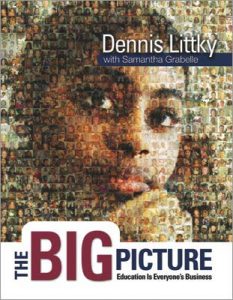
In the United States, historically, the purpose of education has evolved to the meet the needs of society; from instructing youth in religious doctrine, to preparing them to live in a democracy, to assimilating immigrants into mainstream society, to preparing workers for the industrialized 20th century workplace. As educators prepare children and youth for a world that is rapidly changing, what is the goal of education in the US?
Is the goal to produce workers? When should children start working? The federal Fair Labor Standards Act (FLSA) spells out US child labor standards. The FLSA specifies the ages at which children or minors can perform certain jobs. Here are some highlights:
- Children under 18 years old can’t do certain jobs that are hazardous, such as working with explosives and coal mining
- Children who are at least 16 may work on farms and perform hazardous jobs, such as drive machinery
- Minors who’re at 14 years old may work on farms, but it must be during non-school hours. And, children who’re at least 12 may do farm work if the work it’s done: (1) Outside of school hours; (2) with his parent’s permission, and; (3) the parent also works on the farm
- Children under 12 years old may work on a farm outside of school hours if his parent(s) or guardians own or operate the farm
- During the summer or when school is out of session, children under 16 years old may work up to 40 hours per week. During the school year, they can’t work more than three hours per day on a school day and no more than 18 hours a week in total
Public Policy and Law
Begin by reading the Massachusetts General Law regarding best interest of children in custody cases. Here are some legal decisions from courts in Massachusetts. As you read the summary of the cases, was the decision of the court or judge in the best interest of the child? Why or why not?
CASE 1: Mason v. Coleman , 447 Mass. 177 (2006) discusses the rights and responsibilities of parents with shared legal and physical custody of their children. A mother who shared joint physical and legal custody of her children with their father sought to remove the children from the Commonwealth of MA and the father refused to consent to the removal, a probate judge appropriately considered the best interests of the children and did not abuse her discretion in concluding that removal of the children would not serve their best interests. The decision did not violate the mother’s right to freedom of movement pursuant to the Fifth and Fourteenth Amendments to the United States Constitution In order for a parent who shares joint physical custody to move out of state, she or he must meet a higher standard than a parent who has sole physical custody. “The importance to the children of one parent’s advantage in relocating outside the Commonwealth is greatly reduced.” Applying the “best interests of the child” test, the court determined that the mother would not be permitted to move out of state.
CASE 2: Yannas v. Frondistou-Yannas , 395 Mass. 704 (1985) In detail, outlines how the best interests of the child are to be determined in deciding a case in which one parent who has sole physical custody wants to move out of state. In a divorce proceeding in which custody of the parties’ two minor children was in issue, the evidence warranted the judge’s conclusion that awarding physical custody to the wife was in the best interests of each child. A judge in a divorce proceeding, having awarded physical custody to the mother allowed her to move of the children from Massachusetts to Greece because it would be in the best interests of the children. The move to Greece would benefit the mother, financially, emotionally, and socially; that the children would benefit from that advantage and from the strengthening of family and cultural ties in Greece; that excellent schooling would be available to them; and that reasonable alternative arrangements for visitation with their father would be arranged. What is in the best interest of children?
Representations
The topic of visual representations of childhood is approached from a number of different disciplines, including art, sociology, film, consumption, media, history, popular culture, and anthropology. What adjectives do you use to describe childhood? Take a moment and write down 3-5 words. What adjectives do you use to describe adulthood? Write down 3-5 words.
Did you use any of the following words: sinful, violent, carefree or happy. How did your lists compare? Why do you suppose you likely notice differences? What does this tell you about the social construction of childhood?
Read The melodrama of being a child by Karen Wells. Wells (2013) discusses how international non-governmental organisations (INGOs) address the causes of poverty and seek to enrich the lives of children. She explores the methods that INGOs use to increase awareness of the impacts of poverty on children and to raise funds for assisting those children. The representations of poverty disseminated by INGOs films place that the figure of the child centrally in their campaigns. Wells examines the issues of child-saving to child-rights using mise-en-scène to explore the theatrical presentation of suffering. Mise-en-scène means, literally, “put in the scene” consists of all the elements placed in front of the camera to be photographed: settings, props, lighting, costumes, makeup, and figure behavior (meaning actors, their gestures, and their facial expressions). Analyze the photos below, looking at:
- Composition—Is the shot a close-up, far away, or somewhere in the middle? Is it straight on, overhead, or looking up at the action?
- Scene—Where did the photo take place?
- Props—What are the characters holding, interacting with, moving around the setting? What’s in the background?
- Actors—Who plays which part? Do they “fit” the role or are they miscast?
- Costumes—What are the characters wearing? How do their clothes affect the way we understand them and their world?
- Lighting—Is the shot bright (high key), dark (low-key), somewhere in the middle? Are there shadows? What direction does the light come from?
How does the photo represent child saving (politics of pity) and child rights (politics of justice)? Should we appeal to pity or justice when we work to change the settings for childhood? Why or why not? What messages do the images you are finding as you research your topic and question, say about children?

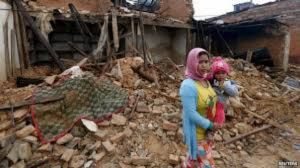
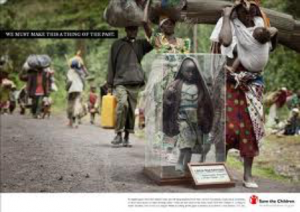
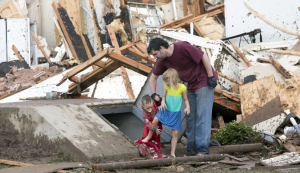
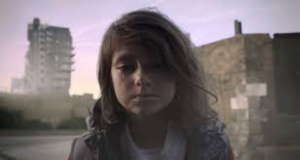
Major Challenges Facing Children Today
The greatest change in childhood over time is the changing concept of childhood. There is a constant transformation of society’s attitudes toward children. Some families shelter their children from life’s uncertainties while some expose children early to adult experience in order to survive in an uncontrollable world. I think that more people expose children early. What do you think? The Age of Protection is ending and an Age of Preparation is setting in. Children are integrated at a young age into the adult world, in every way their lives have become more difficult, more confusing – in short, more like adult lives. How do children move from innocence to competence? How do we protect children yet prepare them for life? What is in their best interest?
Health
Here is a list of the Top 10 Health Concerns. Does the list reflect Protection or Preparation? What are biggest health concerns in your community? Related to our discussion last week on poverty, did you know that evidence shows that in general the lower an individual’s socioeconomic position the worse their health (World Health Organization).
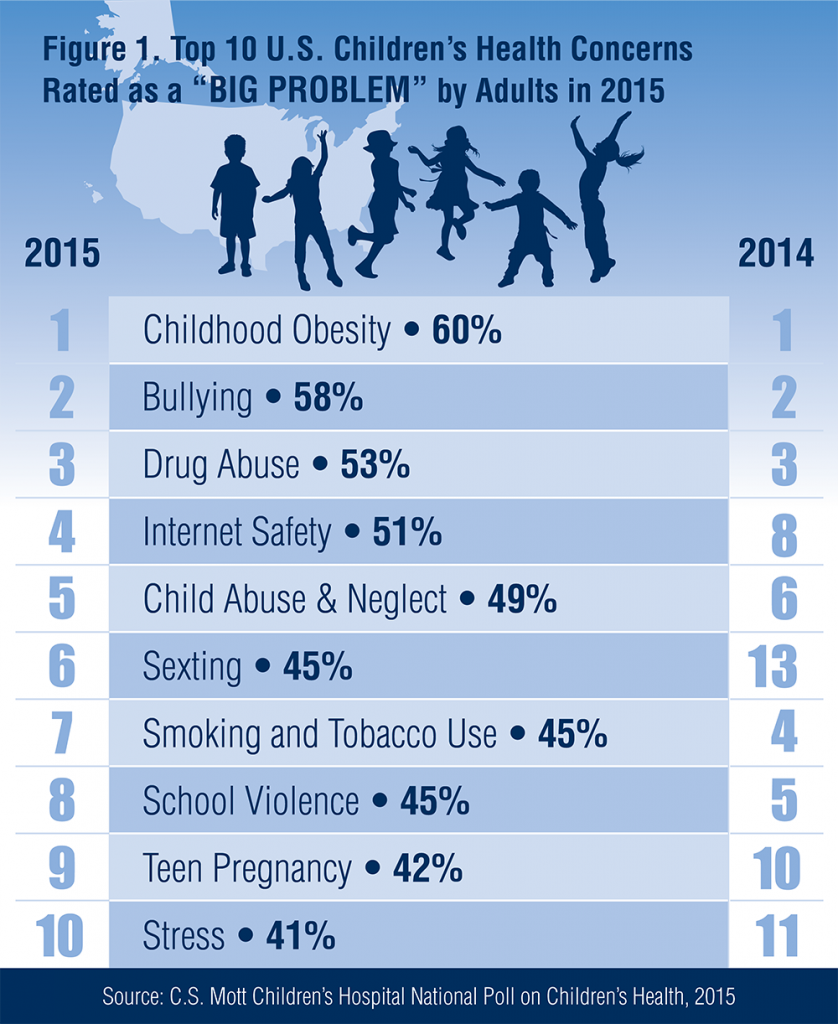
Public Policies and Politics
Watch The Raising of America video clips (see 11 minute trailer from the series on Blackboard) and explore the website to learn more about the five-part documentary series that explores the question: Why are so many children in America faring so poorly? What are the consequences for the nation’s future? How might we, as a nation, do better? The series investigates these questions through different disciplines: What does science tell us about the enduring importance of early life experiences on the brain and body? What it is like to be a parent today? And what policies and structures help or hinder the raising of healthy, happy and compassionate children?
Did you know that wages for average Americans have stagnated over the last forty years. At the same time, the cost of essentials (like housing and education) has substantially increased while corporate profits have skyrocketed. How does this pattern affect childhood?
Some facts to consider from Raising of America
- Most women work and 40% of new mothers return to work by the time their babies are three months old. Former Investment banker and economist Robert Dugger says, “Our policies actually actively discourage parents from being able to take care of their children when they’re very young. They may instinctively want to do it, but we don’t make it easy for them.”
- Ashley a welfare recipient says, “Everybody thinks that you get state assistance, well you’re just lazy and you don’t want to work. That’s not the case for the majority and that’s sure not the case for me.” Given its inaccuracy, why do you think the stereotyping of people in need of public assistance as “lazy” persists? What kind of public assistance do wealthy people receive?
- Why do so many people blame parents for making “wrong” or “irresponsible” decisions rather than address how the dice are loaded against them? How does this impact the policies and programs enacted to support low-income families with children?
- If tomorrow you could make one change to employment policies that would make life better for your children (or the children in your care or community), what would you change and why?
Schools and Schooling & Working Children
Did you know that a 7-year-old living in the United States may have picked the blueberries in your refrigerator? Hundreds of thousands of child farmworkers are working in the U.S. at younger ages, for longer hours, and facing greater risks than any other working youth, according to a new report by the Human Rights Watch. The organization is one of 53 that support a bill pending in Congress called The Children’s Act for Responsible Employment (CARE) Act. The bill would amend the Fair Labor Standards Act (FLSA) of 1938 and offer child farmworkers the same legal protections as youth in every other industry. “The United States spends over $25 million a year — more than all other countries combined — to eliminate child labor abroad, yet is tolerating exploitative child labor in its own backyard,” said Zama Coursen-Neff, author of the report. The report found children as young as 12 legally working more than 10 hours a day. Take a look at the 2015 report: Teens of the Tobacco Fields Child Labor in United States Tobacco Farming Physically, developmentally, and socially, children are different from adults, and these differences leave them uniquely vulnerable to the harmful effects of working in tobacco farming. US laws and regulations have no special provisions to restrict children’s work in tobacco, despite the documented dangers of the work. Why do children work? How does it impact their education?
Strategies to reduce or alleviate challenges
Harvard Center on the Developing Child drives science-based innovation that achieve breakthrough outcomes for children facing adversity. They have wonderful multimedia resources to learn more. I recommend playing Tipping the Scales: The Resilience Game and 3-minute video “Brain Hero” depicting how actions by a range of people in the family and community impact child development. Safe, stable and nurturing relationships and environments help build strong foundations. They are the most powerful protective forces in a young child’s life.
What is resilience and why is it important to understand the concept? How can you support resilience in children?
Summary
Is there a relationship between social policy and the social construction of childhood? The Exosystem and Macrosystem provide the setting for childhood. Many disciplines contribute to our understanding of these influences in a variety of context. What is the moral of the story for Week 4?
After completing the reading and weekly activities you should be able to
- Describe how childhood interactions and experiences are shaped, modified, and defined by institutional and organizational forces such as the economy, education, politics, and religion as seen in your discussion and final project draft.
- Identify three to five major challenges facing children today as seen in your discussion and final project draft.
- Explain strategies to determine, prioritize, and research issues of concern regarding children that reflect and amplify their voices as seen in your discussion and final project draft.
Past Students Questions
How come some children are not affected by their childhood as much as others? Does it all just depend on the child?
Should a parent be obligated to spend a certain amount of hours a day with their child to show them they love and care for them even if the parent’s life is busy?
Challenges
Reflection and Discussion
As you prepare for the discussion, reflect on the questions:
How do you interpret the ways in which environmental, educational, economic and political conditions affect children?
How does current U.S. family leave policy actually deter new parents and caregivers from spending time with young children? What are the consequences for babies—and their mothers ?
If tomorrow you could make one change to employment policies that would make life better for your children (or the children in your care or community), what would you change and why?
What is the goal of education in the US? Why do children work? How does it impact their education?
How do representations influence the social construction of childhood? How do children move from innocence to competence? How do we protect children yet prepare them for life? What is in their best interest?
Group Research Continued
Looking ahead to next week remember that you will present your Collaborative Research Project early in the week. The assignment includes an 8 to 10 minute video and supporting written materials such as presentation slides or documents including your sources. The video puts everything together the question (What), research (So What), and conclude with Now What where you discuss possible solutions. You will add a group reflection to address: how the insights from different disciplines contributed to your understanding of the issue as well as your new ideas about children and childhood. As you work remember to:
- Clearly state the research question and logically and convincingly describe the significance of the question to Childhood Studies
- Logically and persuasively answer the research question.
- Explain limitations of research
- Clearly describe how you used the disciplinary perspectives to answer the question
- Make 3 recommendations for further research
- Explain how the insights from different disciplines contributed to the understanding of the issue as well as your new ideas about children and childhood
- Create visuals that enhance and illustrate the verbal message.
- Discuss 5 to 7 reliable and scholarly sources to support your claims. Making sure that each discipline has 2 or more sources.


